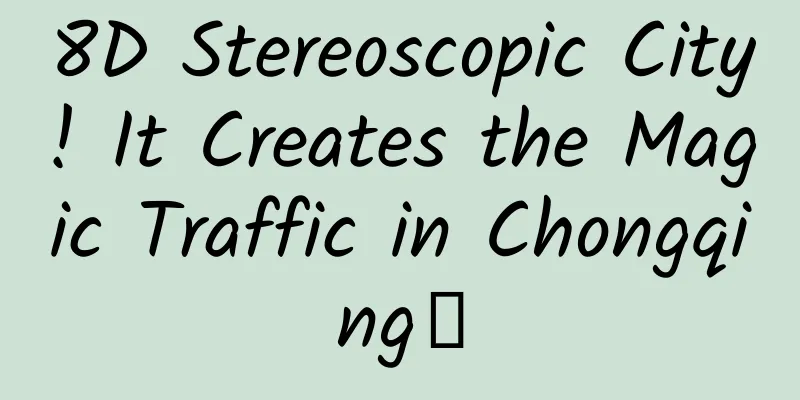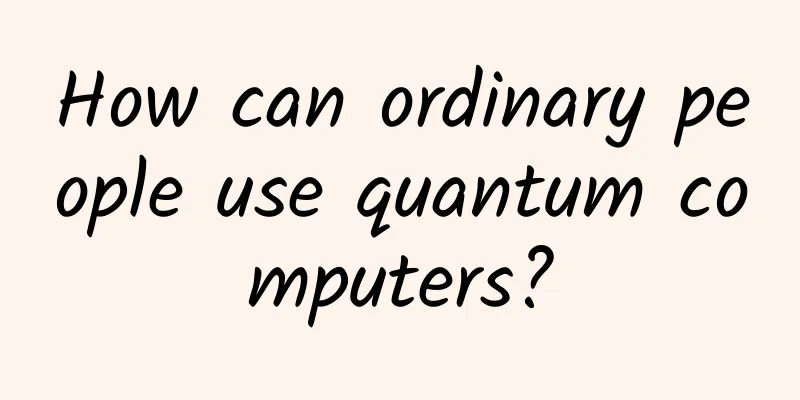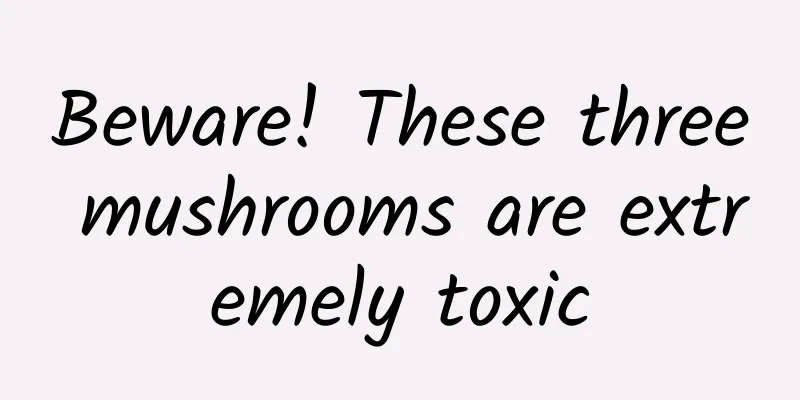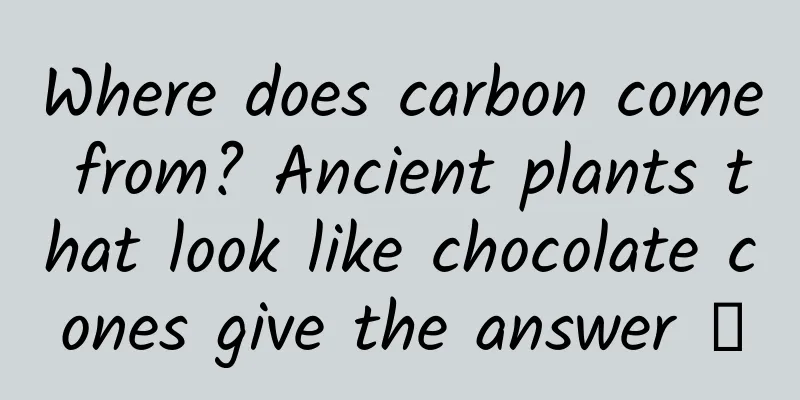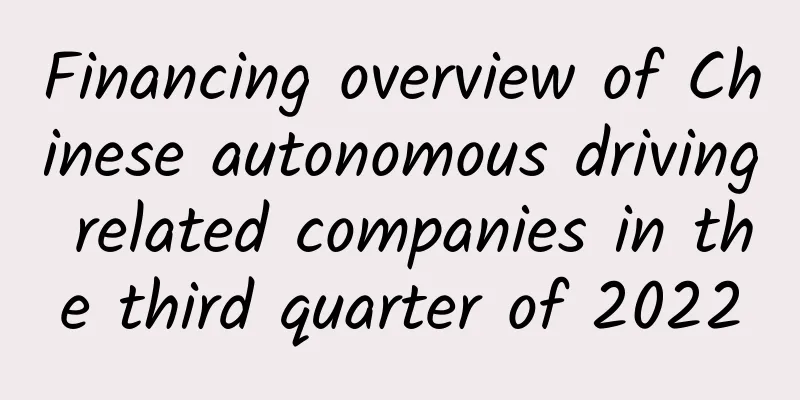Why did Emperor Wen of Han want to be alone in Bailuyuan?
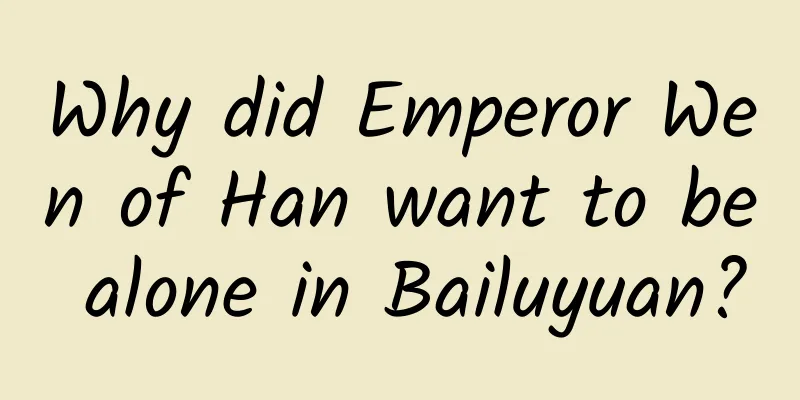
|
On the morning of December 14, the State Administration of Cultural Heritage held an online meeting in Beijing, focusing on three important archaeological discoveries and research results in Gansu, Henan and Shaanxi. At the meeting, it was announced that the Jiangcun Tomb in Bailuyuan, Xi'an, Shaanxi Province is the Tomb of Emperor Wen of the Han Dynasty. The archaeological investigation and excavation of the Tomb of Emperor Wen of Han Dynasty began in the 1960s. According to the "Classified Records of Chang'an" written by Luo Tianxiang in the Yuan Dynasty, the location of the Tomb of Emperor Wen of Han Dynasty was at Fenghuangzui, two kilometers north of the Jiangcun Tomb. The confirmation of the Jiangcun Tomb as the real Tomb of Emperor Wen of Han Dynasty corrected a misconception about the Western Han Dynasty imperial tombs that had been circulating for nearly a thousand years, and also solved the issue of the names and positions of the eleven Western Han Dynasty imperial tombs. Why is it so difficult to identify the Ba Ling? 1 Emperor Wen of Han As early as the Qin and Han Dynasties, there was a concept of "treating death as life". The tomb is the last relic of the tomb owner left in the world, symbolizing the tomb owner's ultimate status and glory. However, Emperor Wen of Han refused the fiefdom that symbolized status and power. The first is economy. The height of the mausoleums of the Western Han Dynasty emperors is generally more than 30 meters. According to the calculation of archaeologists, it takes more than 300,000 laborers to build the mausoleums. Emperor Wen of the Han Dynasty, in order to save manpower, left a will before his death that "the mountains and rivers of the mausoleums should remain as they were, and no changes should be made." The second is to prevent theft. Emperor Wen of Han was very worried about the tomb being robbed after his death. General Zhang Shizhi said to him: If there is something in the tomb that attracts tomb robbers, even if the entire Nanshan Mountain is cast with iron, there will still be people who go to dig; if there is nothing in the tomb that attracts tomb robbers, even if there is no stone coffin, there is nothing to worry about! After hearing Zhang Shizhi's words, "Xiaowen realized it and buried him simply without building a tomb on the mountain." The "Book of Han: Chronicle of Emperor Wen" also records that "because of the mountain, no tomb was built", which shows that there is no burial mound at the tomb of Emperor Ba. However, it is precisely because there is no tomb mound and the description of the mountain as the tomb that misled people's judgment on the location of the Ba Ling for quite a long time. 2 Ordinary Phoenix Mouth The record of Ba Ling in the "Sanfu Huangtu" only says that it is "70 miles east of Chang'an City, hidden in the mountains, and no tomb is built"; the "Shui Jing Zhu" annotated by Li Daoyuan in the Northern Wei Dynasty mentioned that the tomb of Emperor Wen of Han was on Bailuyuan; in the Northern Song Dynasty, the "Chang'an Zhi" also made the same record about the location of Ba Ling, which provides a range for the location of Ba Ling - Bailuyuan. However, the 30-kilometer range from Lantian to the bank of the Chan River is considered Bailuyuan, and no one knows the exact location. The earliest record of the tomb of Emperor Wen at Fenghuangzui was in the Yuan Dynasty. When he was a teenager, local historian Luo Tianxiang followed old friends and scholars, visited many scenic spots in Guanzhong, and became familiar with the local landscape and stories, becoming a well-known scholar. In his later years, Luo devoted himself to compiling the "Classified Records of Chang'an", which recorded that "Emperor Wen's tomb is at Fenghuangzui, north of Bailuyuan, 40 miles east of Tonghua Gate, Jingzhao". Because the shape of the entire mountain at Fenghuangzui is very similar to the imperial tomb, and under the influence of the terrain and the multiple records of "the mountain is the tomb" in historical books, there are many steles in front of the mountain. Among them, the more important ones are "The Imperial Stele in the 27th Year of Kangxi", "The Sacrifice Stele in the First Year of Yongzheng", and "The Imperial Sacrifice Stele in the 24th Year of Jiaqing". The stele erected by Bi Yuan, the governor of Shaanxi in the Qing Dynasty, is also here. Therefore, for a hundred years, people have believed that the tomb of Emperor Wen of Han is in Fenghuangzui. In the first half of the 20th century, many Chinese and foreign scholars visited Fenghuangzui and all believed that Fenghuangzui was the Ba Mausoleum. In 1966 and 1975, Wang Xueli and Wu Zhenfeng from the Shaanxi Provincial Cultural Relics Management Committee conducted rescue excavations of the burial pits of the Ba Mausoleum and the Nan Mausoleum. In the 1980s, Liu Qingzhu and Li Yufang from the Institute of Archaeology of the Chinese Academy of Social Sciences conducted archaeological surveys and measurements of the Ba Mausoleum and the Nan Mausoleum. In 2011, during the National Cultural Heritage Administration's archaeological work on large sites, archaeological experts from Shaanxi Province and Xi'an City conducted an exploration of Fenghuangzui for more than a month and found no traces of artificial excavation. "At that time, I wondered if our work was not detailed enough and we missed some clues, and I didn't dare to draw a conclusion easily," recalled Ma Yongying, a researcher at the Shaanxi Provincial Institute of Archaeology. Even if modern methods such as geomagnetic radar, high-density electrical resistance method, and radon measurement were used to survey Fenghuangzui later, except for more than 10 Ming and Qing steles under Fenghuangzui, there is no hollow in the mountain of Fenghuangzui, so it is impossible for a large tomb to exist inside the mountain. Scholars have also speculated and ruled it out from another angle. Some scholars said that according to the tradition of the imperial mausoleums of the Western Han Dynasty, mausoleums were generally built on the edge of the loess tableland. Except for the relatively high mausoleums of the imperial mausoleums, the entire mausoleum was relatively flat with little height difference. However, the height difference between Fenghuangzui and the lowest point in the mausoleum is 230 meters, which makes it difficult to build external storage pits, ritual buildings and other facilities during the construction of the mausoleum. In addition, Fenghuangzui is 2,100 meters away from the burial mound of Empress Dou, which is greater than the distance between the mausoleums of the emperor and empress of the Western Han Dynasty, the most powerful country. Fenghuangzui is obviously impossible to be the tomb of the tyrant. Phoenix Mouth is really just an ordinary piece of land. Why did such a famous local historian of the Yuan Dynasty so confidently believe that Fenghuangzui was the tomb of the emperor? What went wrong? Some experts speculate that scholars after the Han Dynasty were likely influenced by the historical records that the tomb of the Emperor Ba was "buried in a mountain and no tomb was built." Moreover, scholars in the Yuan Dynasty were easily influenced by the tomb style of the Tang Dynasty, which was closer to them. Compared with the Han Dynasty's usual method of piling up earth to build tombs, the most prominent feature of the Tang Dynasty's imperial tombs was that they were built in a mountain. The practice of "building a mausoleum on a mountain" in the Tang Dynasty began with Emperor Taizong Li Shimin's Zhaoling Mausoleum. According to historical records, when Empress Wende Changsun died in the 10th year of Zhenguan, Li Shimin followed her will to "be buried on a mountain" and "be frugal and simple during her final burial", and drew on the ancient motto that "from ancient times to the present, there has never been a country that has not perished, and there has always been a tomb that has not been dug", and personally selected the lone and towering main peak of Jiuling Mountain as the mausoleum site to build the Xuan Palace of Zhaoling Mausoleum. This move not only fulfilled Empress Wende's last wish of "thrifty burial", but also discouraged "traitors and thieves", creating a precedent for the "mountain as mausoleum" of Tang emperors after their death, and later generations "followed it as a rule". This burial form became a custom during the Qianling Mausoleum of Emperor Gaozong Li Zhi and Empress Wu Zetian - the entire mountain was used as a mausoleum, a cave was dug to build a sleeping palace, and the tomb passage was completely sealed with stone strips. Perhaps, Luo Tianxiang happened to explore Fenghuangzui in Bailuyuan and saw a handsome little mountain. And if you look at it from the position of the Ba River, it is indeed majestic and handsome. In the end, he mistakenly thought it was the location of Ba's Mausoleum. 3 The Tomb of Jiangcun by Mistaken Accident Since Ba Ling is not in Fenghuangzui, where is Ba Ling? In 2001, there were a number of major tomb-robbing incidents in the Ba Mausoleum area. The tomb of Empress Dou and the accompanying tombs in the Ba Mausoleum area were robbed one after another. The "Jiangcun Tomb" was discovered at this time. On the evening of October 16 of that year, the tomb-robbing gang organized by Zhang Xiaoyan and Huang Shimin found a sorghum field near Dizhaiyuan and quickly dug into the tomb chamber along the previous robbing holes. However, they did not find the gold and silver objects they wanted, but took a few black pottery figurines and took them out to resell. At first, these figurines were sold for only 300 yuan each, but later the price was raised to 800 yuan each, and even antiquities dealers wanted them. After that, they broke into the tomb several times and stole more than 180 figurines. After several changes of hands, some of the terracotta figurines were lost overseas. In 2002, six Western Han Dynasty black terracotta figurines that were stolen from here appeared in the auction catalog of Sotheby's auction house in the United States and were about to be auctioned. The Chinese government made timely representations through diplomatic channels. After much effort, the six terracotta figurines were returned to Xi'an in 2003. Subsequently, relevant departments launched an investigation into the origins of the six terracotta figurines and eventually determined that they were stolen from the Jiangcun Tomb by tomb robbers. [Note: The naming of Jiangcun Tomb follows the archaeological norms, which is to name ownerless sites and tombs according to the smallest place name in the local area. This tomb is located on the east side of Jiangcun, so it is called Jiangcun Tomb.] At the same time, the Jiangcun Tomb also began a long process of archaeological excavation. The emergence of the "亞"-shaped tomb In 2006, archaeologists conducted an archaeological survey of Jiangcun. The results of the exploration surprised everyone. There was actually a large "亚"-shaped tomb with four tomb passages hidden here. A "亞"-shaped tomb is a large tomb with a square or "亞"-shaped chamber and four long tomb passages. Its entire shape is like the ancient Chinese character "亞", or it is called a cross-shaped tomb. Among the Western Han Dynasty emperors' tombs, the tombs of Emperor Gaozu of the Han Dynasty, the founding emperor, and Emperor Ping of the Han Dynasty, the last emperor, are all in the "亞"-shaped tomb. The princes were usually buried in the shape of a Chinese character "Zhong". This type of tomb usually has two passages, such as the Tomb No. 1 of Qin Jinggong. In addition, there are also Chinese character "Jia" tombs, which are smaller than the Chinese character "Zhong" tombs. Usually, a passage extends from the south end of the tomb chamber. Among the more than 100 outer storage pits surrounding the Jiangcun Tomb, which symbolize government offices, many Ming Dynasty organ seals such as "Zhong Sikong Seal", "Zhong Sikong Cheng", "Shan Guan", "Cang Yin" and "Jiu Xian" were cleaned out, which further prove that the identity of the tomb owner was extraordinary. *Same tomb, different burial site In 2016, the outer storage pit of the Jiangcun Tomb was disturbed by robbers. In order to confirm the preservation status of the tomb and the distribution of cultural relics in the surrounding areas, with the approval of the State Administration of Cultural Heritage, archaeologists conducted a systematic archaeological survey and exploration of the Jiangcun Tomb and the nearby Empress Dou's Tomb, Empress Dowager Bo's Southern Tomb, and the "Phoenix Mouth" site, which is said to be the Tomb of Emperor Wen of Han, and carried out archaeological excavations of the outer storage pit of the cemetery. Every imperial mausoleum in the Western Han Dynasty has a mausoleum for empresses buried next to it. Most mausoleums for empresses are located to the east of the mausoleum. If two empresses are buried together, one is to the east and the other is to the west, such as the mausoleum of Emperor Yuan, where the mausoleums for empresses are located on the east and west sides. The mausoleums for empresses are slightly smaller than the mausoleums of emperors, but the mausoleum structure and architectural layout are the same as those of emperors. Some empresses reigned for a long time and ruled the country, so the scale of their mausoleums can also be the same as that of the emperors, such as the mausoleum of Empress Lü and the mausoleum of Emperor Gaozu, which are of the same size. The tomb of Empress Dou is located 700 meters northeast of Jiangcun Tomb. There is a funnel-shaped mound on the ground. The tomb is also a "亚"-shaped vertical pit tomb with an expanded wooden coffin. According to historical records, Empress Dou and Emperor Wen's daughter, Dou Taizhu, were buried in the Ba Mausoleum. Previously, many people believed that the Jiangcun Tomb was the tomb of Dou Taizhu. But as the archaeological excavation went deeper, a circle of walls determined the fate of the place. Outside the Jiangcun Tomb, there is a cemetery facility paved with pebbles (temporarily named "stone enclosure"), which is more than 390 meters long and 1.5 meters wide. There is a gate site in the middle of the four sides of the stone enclosure. The Empress Dou's Tomb in the east also has its own rammed earth garden wall. However, through exploration and trial excavation, the remains of a rammed earth wall with a length of more than 1,200 meters from east to west and a width of 863 meters from north to south were discovered outside the Jiangcun Tomb and Empress Dou's Mausoleum. This means that the two tombs are in the same cemetery, but each person has his own grave. "Historical Records: The Family of Foreign Relatives" records that "the Han emperor and his empress were buried together in the same tomb, not in a separate mausoleum. This is the case with all mausoleums." On December 14, the State Administration of Cultural Heritage announced the latest archaeological findings, basically confirming that the Jiangcun Tomb in Bailuyuan, Xi'an, Shaanxi Province, is the imperial tomb of Emperor Wen of Han, Liu Heng. It is only 2.1 kilometers away from the "Phoenix Mouth". The millennium fallacy was corrected. 4 Why choose Bailuyuan? The Book of Han records that in the seventh year after Emperor Wen of Han, “in the summer of the sixth month of the seventh year, the emperor died in the Weiyang Palace… and was buried in the Ba Mausoleum on the eighth day of the eighth month.” On December 15, 2021, in Xi'an, Shaanxi, cultural relics unearthed from the outer storage pit of the Jiangcun Tomb were placed in the archaeological studio. Photo: China News Service Looking at the imperial tombs of the Western Han Dynasty, except for the Ba Mausoleum of Emperor Wen of Han and the Du Mausoleum of Emperor Xuan of Han (located on Hongguyuan, northeast of Fengqiyuan), the others are all on the Xianyang Plain. From west to east, they are the Mao Mausoleum of Emperor Wu of Han, the Ping Mausoleum of Emperor Zhao of Han, the Yan Mausoleum of Emperor Cheng of Han, the Kang Mausoleum of Emperor Ping of Han, the Wei Mausoleum of Emperor Yuan of Han, the Yi Mausoleum of Emperor Ai of Han, the An Mausoleum of Emperor Hui of Han, the Chang Mausoleum of Emperor Gaozu of Han and the Yang Mausoleum of Emperor Jing of Han, stretching nearly a hundred miles from east to west. Why did Emperor Wen of Han choose Bailuyuan? On the one hand, it is inseparable from the ancient Zhaomu system. People in the Han Dynasty believed that: "The father is Zhao, the son is Mu, and the grandson is Zhao again. This is the correct etiquette of the ancient times." The emperors of the Western Han Dynasty who belonged to the Zhao position included Gaozu, Jingdi, Zhaodi, Xuandi, and Chengdi; those who belonged to the Mu position included Huidi, Wendi, Wudi, Yuandi, Aidi, and Pingdi. From the distribution of the tombs of the Western Han emperors, it can be seen that people of the same generation cannot be buried in the same mausoleum area after death because their Zhao and Mu order is the same and their thrones are connected. For example, Huidi and Wendi are both sons of Gaozu and belong to the Mu position. Huidi's Anling is next to Changling, and Emperor Wen can only build a separate mausoleum area south of the Wei River. However, if the successor is of different generations, they cannot be buried in the same mausoleum area after death because their positions in the order of Zhaomu are the same and their thrones are connected. For example, Emperor Xuan was the great-grandson of Emperor Zhao, and both emperors were in the Zhao position. Emperor Xuan Liu Xun succeeded Emperor Zhao Liu Fuling as emperor, so Emperor Xuan could not be buried in the original mausoleum area in Xianyang, but was chosen to be buried in Hongguyuan. On the other hand, it was determined by the political situation at the time. When Emperor Wen of Han ascended the throne, his father and brother had built a buffer zone in the form of a mausoleum on the north side of the capital, but there was no barrier east of Chang'an except for Hangu Pass in the east of Guanzhong and Wugu Pass in the southeast. Once the pass fell, the capital would be in danger. Bailuyuan is located on a high ground and is guarded by the Ba and Chan rivers. If a tomb is built here, a mausoleum town is established, a large number of people are relocated there, and the east-west transportation routes are controlled, it will inevitably form a solid barrier to the east of the capital Chang'an. 5 Ba Ling, why is it important? What is the significance of the confirmation of Ba Ling today? Li Xueqin, a famous historian, paleographer, and professor of the History Department of Tsinghua University, once said that there are two criteria for judging the value of archaeology: one is what method is used for excavation, and the other is whether the archaeological discoveries can change and supplement modern cognition. First, the confirmation of the tomb of the emperor solved the problem of name and position. In 1933, Japanese archaeologist Kiroku Adachi compiled his findings, surveys and research results in Chang'an into a book called "Research on Historical Relics of Chang'an" published by Toyo Bunko. The fifth chapter of this book, "Han Dynasty Tombs", can be regarded as the pioneering work of archaeological research on the eleven tombs of the Western Han Dynasty. Since the 1980s, Chinese archaeological researchers have conducted a series of archaeological excavations on the Western Han Dynasty imperial tombs, revised the names and order of the Western Han Dynasty imperial tombs, and roughly grasped and understood the shape, structure and layout characteristics of the Western Han Dynasty imperial tombs. This discovery negates the traditional understanding that the "Phoenix Mouth" is the tomb of Emperor Wen of the Han Dynasty, determines the exact location of the tomb of Emperor Wen of the Han Dynasty, and solves the problem of the names of the eleven tombs of the Western Han Dynasty. Secondly, Ba Ling is a key link in the development and evolution of the Western Han imperial mausoleum system. The double mausoleum of Ba Ling, the imperial mausoleum in the center, and the outer storage pits symbolizing government agencies surrounding the imperial mausoleum are the earliest appearances in the Western Han imperial mausoleums. Prior to this, in the Changling Mausoleum of Emperor Gaozu and the Anling Mausoleum of Emperor Hui, the mausoleums of the emperor and the empress were located in the same mausoleum, and no separate mausoleum was built for the mausoleum of the empress. This system may have followed the tradition of placing the royal mausoleum and the empress in the same mausoleum area since the Warring States Period, such as the Wei royal mausoleum area in Guwei Village, Huixian County, Henan Province, and the Zhongshan royal mausoleum area in Pingshan, Hebei Province. After Emperor Wen of the Han Dynasty, the three-layer mausoleum system was fully implemented starting from Emperor Jing's Yangling. According to archaeological survey data from Emperor Wu's Maoling, Emperor Zhao's Pingling, Emperor Xuan's Duling, Emperor Yuan's Weiling, and Emperor Ping's Kangling, the three-layer mausoleum system was also implemented in Maoling, Pingling, Weiling, and Kangling. The layout of Ba Mausoleum, which inherits Chang Mausoleum and An Mausoleum above and is adjacent to Yang Mausoleum, Mao Mausoleum, Ping Mausoleum and Du Mausoleum below, is a key link in the development and evolution of the Western Han imperial mausoleum system. It also reflects the development and changes of the political thought and ideology of the Western Han Empire. Finally, among the numerous precious cultural relics unearthed from the Imperial Mausoleum, seals, seals and other cultural relics with inscriptions have confirmed the construction concept of "the mausoleum is like a capital city" and the imperial mausoleum "imitating the real Western Han Empire". The numerous gold and silver wares with grassland style are direct evidence of the exchange and integration of agricultural and pastoral cultures during the pre-Qin and Han dynasties, and witness the historical development trend of Chinese civilization from "pluralism" to "integration". References: 1. Correcting a thousand-year-old fallacy! The real tomb of Emperor Wen of Han is actually here丨China News Network, 2021-12-14; 2. Why is it this? Key evidence confirms that the Jiangcun Tomb is the Tomb of Emperor Wen of the Han Dynasty丨Xi'an Evening News, 2021-12-14; 3. How was the Tomb of Emperor Wen of Han discovered? This story started with a tomb robbery many years ago...丨Learning Great Country, 2021-12-14; 4. Treat death as life | Ge Jianxiong, Chinese Language Teaching and Research, 2007; 5. Uncovering the mystery of the tomb of Emperor Wen of Han: the “Phoenix Mouth” mystery; what caused it? How large was the scale of the looting at the end of the Western Jin Dynasty? | Red Star News, 2021-12-15; 6. The tomb of Emperor Wen of Han is not Fenghuangzui, but may be the Jiangcun Tomb discovered in 2001丨Xi'an Evening News, September 2015; 7. Why is the Tomb of Emperor Wen of Han in Bailuyuan?丨The Paper, 2021-12-15; 8. A Preliminary Study on the Inner, Middle and Outer Triple Cemetery System of the Qin and Western Han Dynasty Imperial Mausoleums丨China Cultural Relics News, May 18, 2007, Page 007. Text丨Cui Hexuan, Observer of Outlook Think Tank This article is an original article from Outlook Think Tank. |
<<: People are trapped! How to avoid danger and save yourself after a flooding accident?
>>: The most handsome "hermit" in the Himalayas
Recommend
Recommended collection | 9 common fission gameplays!
Many people have a misunderstanding about fission...
Beware! Changes in leg muscle blood vessels may be the earliest warning sign of heart failure
Compiled by: Gong Zixin Researchers at the Univer...
Zhuzhou Mini Program Franchise Company, how much does it cost to join a mechanical equipment mini program?
How much does it cost to join the Zhuzhou Mechani...
5000 words to explain Heytea's private domain operation method
A few days ago, when I was browsing the news, I f...
DeepMind's latest research: AI beats humans and designs better economic mechanisms
“Many of the problems facing humanity are not sim...
Apple's genius hacker opens source software for autonomous driving
At the end of October, according to foreign media...
Can any of you please tell me what the Baidu bidding promotion techniques are? Let's talk
It is mainly related to the quality, and now it h...
How can offline education and training personal accounts build a WeChat private domain pool?
In the past two years, private domain traffic has...
Behind Kuaishou’s entry into cities, how to promote in the rural market?
The rural market gives you a long time, and you h...
Be careful of burns when using a warm baby in winter
Every cold winter Human beings are all related to...
Surface Classroom: "From 0 to 1 Entrepreneurship Course"
Surface Classroom: "From 0 to 1 Entrepreneur...
What happened to oil prices returning to the 5 yuan era? What impacts will it have? Which year was the era of oil price at 5 yuan?
Affected by the sharp drop in international oil p...
How do local restaurants use Douyin?
Many of my fans and friends run offline restauran...
Which is the best phone to buy: 128G, 256G, or 512G? After reading the answers from insiders, I learned a lot.
Suggestion 1: Save money and buy 128G, so you can...

